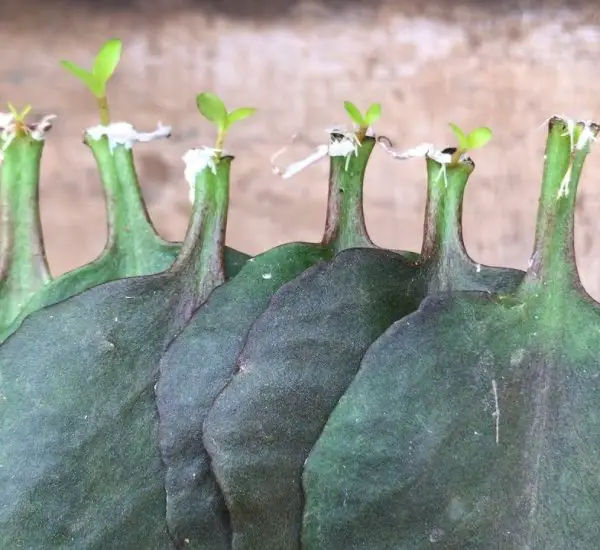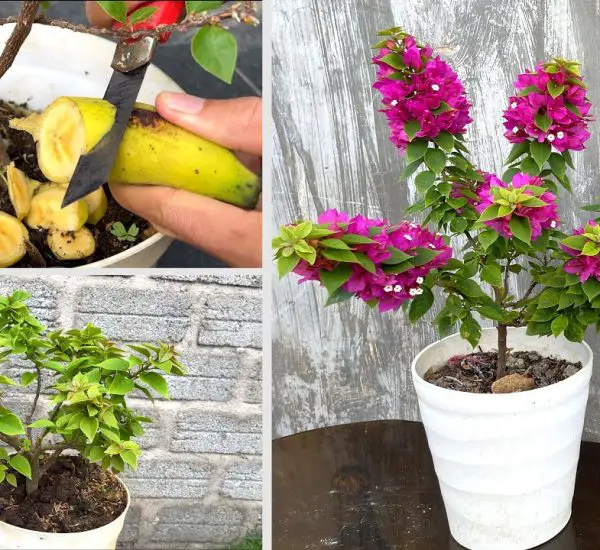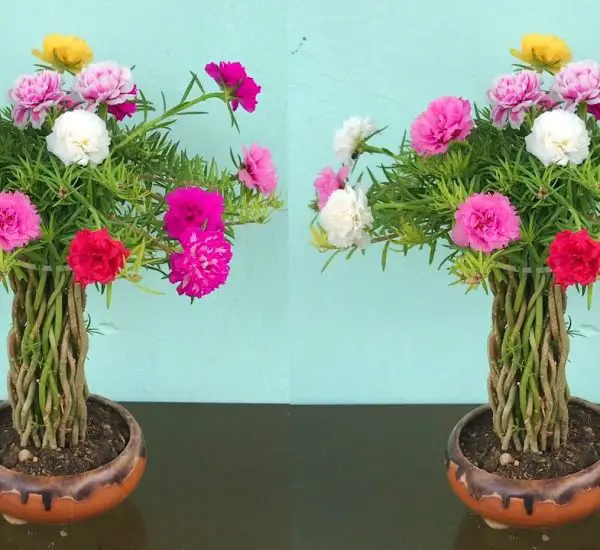Gardening enthusiasts know the importance of encouraging plants to flower and grow to their full potential. Whether you’re trying to get your plants to bloom year-round or looking for ways to propagate a favorite variety, some simple, natural techniques can work wonders. One such technique is using bananas to help plants flower, as well as grafting Christmas cactus to create new, beautiful plants for your collection.

In this article, we’ll explore how bananas can help encourage flowering in plants and share tips on grafting Christmas cactus, two easy methods that can take your gardening efforts to the next level.
Bananas: A Secret to Helping Plants Flower
Bananas are packed with essential nutrients that can do wonders for your plants. While you might typically associate bananas with being a tasty snack for humans, they are also a powerful ally for your garden.
Why Bananas Work for Flowering Plants
Bananas contain natural potassium, phosphorus, and calcium, which are vital for plant growth and bloom development. These nutrients help plants:
- Strengthen their roots
- Promote flowering and fruit production
- Boost overall plant health
The potassium found in bananas is particularly beneficial for helping plants produce more flowers. It encourages flower formation and improves the plant’s resistance to stress, diseases, and pests. By adding bananas to your garden, you can help your plants bloom more profusely.
How to Use Bananas for Flowering Plants
There are several easy ways to incorporate bananas into your garden routine:
- Banana Peel Fertilizer: Cut banana peels into small pieces and bury them in the soil around the base of your plants. As the peels break down, they will release valuable nutrients into the soil, encouraging your plants to flower more abundantly.
- Banana Liquid Fertilizer: Place banana peels in a jar of water and let them sit for a few days to create a natural banana fertilizer. After straining out the peels, use the liquid to water your plants. This nutrient-rich water will stimulate growth and encourage flowering.
- Banana Mash: For potted plants, you can mash a banana and mix it into the top layer of soil. This provides a direct nutrient boost to the plant’s root system.
How to Graft Christmas Cactus
Christmas cactus (Schlumbergera) is a popular holiday plant known for its stunning flowers that bloom around Christmas time. Grafting Christmas cactus is a great way to propagate this beautiful plant and grow more of them to share or enjoy. Here’s a simple guide on how to graft Christmas cactus successfully.
Why Graft Christmas Cactus?
Grafting is an ideal way to propagate Christmas cactus because it allows you to combine the best traits of different plants, like strong root systems and vibrant flowers, into one. It also allows you to grow a new plant from an existing one, saving time and effort.
What You’ll Need for Grafting
- Healthy Christmas cactus stems: Choose healthy, disease-free stems from your existing plant.
- Scalpel or sharp knife: A clean, sharp blade is essential for making clean cuts.
- Rootstock: A healthy rootstock plant is necessary to support the graft. You can use another Christmas cactus or a related species.
- Grafting tape or rubber bands: These will hold the graft in place while it heals.
- A clean surface: Ensure all your tools and surfaces are sterile to prevent infection.
Steps for Grafting Christmas Cactus
- Choose the Right Stems: Select healthy, mature stems from your Christmas cactus. Cut a 3-4 inch segment from the top of the plant to use as the scion (the top part that will produce flowers).
- Prepare the Rootstock: Choose a healthy rootstock that is compatible with your scion. Cut the rootstock to about 3-4 inches, ensuring it has strong roots for the graft to attach.
- Make the Graft Cuts: Using a sharp knife, make a vertical slit in the rootstock. Then, make a matching cut in the scion so that the two pieces will fit together snugly.
- Join the Scion and Rootstock: Place the scion and rootstock together, aligning the cuts as closely as possible. This will allow the cambium (the growing tissue) of the two parts to connect and form a graft.
- Secure the Graft: Wrap the graft union with grafting tape or rubber bands to hold the pieces together while they heal.
- Care for the Grafted Plant: Place the grafted Christmas cactus in a warm, bright spot with indirect sunlight. Keep the soil slightly moist, but not soggy. After a few weeks, the graft should take, and new growth will begin to emerge from the scion.
Conclusion
Using bananas to help plants flower and grafting Christmas cactus are two excellent techniques for gardeners looking to boost their plant’s health and grow beautiful new plants. By utilizing the nutrients in bananas and learning how to graft, you can create a more vibrant, thriving garden that brings joy throughout the year.
Whether you’re looking to encourage more blooms or propagate a beloved plant like Christmas cactus, these simple, natural methods can make a big difference in your gardening success. Give them a try and enjoy the beautiful results in your garden!



